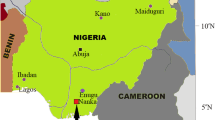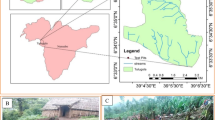Abstract
The study area is located in the south of İzmir city centre in an area built without planning permission or any overall city plan. In this area, a number of mass movements occurred in the past and the region is still an active landslide field at present. The real sliding factor is geological structure, which is made up of hard volcanic rocks overlying soft Neogene clayey soils, and forms a typical structure prone to sliding. Unplanned human activities change the hydrogeological and geotechnical stabilities of the geological formations in a negative way. Rain and water leaking either directly from the mains or septic holes infiltrate into the ground and act as one of the factors in causing landslides. It is clearly shown that the irregular urbanization in and around Kadifekale is one of the factors contributing to the landslides in the area. To prevent the occurrence of landslides in the study area an effective surface and under ground drainage should be established. Rain and wastewater should be removed from the area by separate systems. Slopes should be reduced, water-loving trees should be planted and construction of high rise buildings should be avoided.
Similar content being viewed by others
Author information
Authors and Affiliations
Additional information
Received: 12 December 1997 · Accepted: 4 April 2000
Rights and permissions
About this article
Cite this article
Tarcan, G., Koca, M. Hydrogeological and geotechnical assessments of the Kadifekale landslide area, İzmir, Turkey. Environmental Geology 40, 289–299 (2001). https://doi.org/10.1007/s002540000170
Issue Date:
DOI: https://doi.org/10.1007/s002540000170




